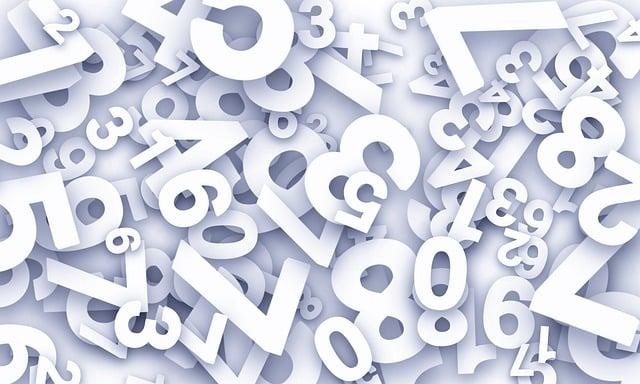Many people take loans to cover emergency expenses. These can include urgent healthcare needs, consolidating high-interest debt, or taking a much-needed holiday. When considering a loan, borrowers must consider their ability to repay the debt.
To assess repayment capability, lenders look at financial behavior, creditworthiness, and debt.
Borrowers often prequalify or use a consumer loan calculator to determine the loan’s cost. Please visit www.billigeforbrukslån.no/forbrukslån-kalkulator/ for details on using the loan calculators.
What Is a Loan Calculator
A loan calculator is a tool borrowers use to help determine the monthly payment for different types of loans, including personal lending. Based on the amount you’ll pay each month; a borrower can also discern the loan amount with the calculator. The loan type and the terms and conditions will depend on the lending agency.
Before committing to a product, loan providers’ offers with specific rates and terms need to be factored into the borrower’s calculations to make an informed decision and find the most competitive options. It’s critical to gain insight into the use of the various calculators to ensure the most accurate result.
The idea is to assist borrowers with assessing the most interest they’ll be responsible for, the highest monthly payment, the term, and on. With most calculators, you must input the loan amount, preferred term, and credit score.
Once the information is received, the system processes it using algorithms that account for that lending site’s terms. It will consider your preferences and determine an estimated amount for which the lender will qualify you.
Loan Calculator Terms to Know
Different loan calculators have unique features, but the loan details must be input into each system. These include the following:
Borrowing amount
The lending amount outlined in the agreement is the amount you guarantee to repay before the end of the term. The most common repayment method is installment loans, which have equal monthly payments throughout the loan’s life.
The borrowing amount can exceed what you request depending on your eligibility, including creditworthiness. It’s essentially the amount the lender qualifies you for and the loan amount you accept.
Loan duration
The loan period is the length of time a borrower has to repay the debt when making regular monthly installments. As the borrower, you have the option of long and short-term loans.
The loan terms are also the conditions of the loan that you agree to when signing the contract. These will reveal the rates, fees, and charges and disclose any hidden costs usually included in the fine print. It’s essential that borrowers read the entire contract to ensure a thorough understanding before committing.
Interest rate
The interest on a loan is the amount a lender charges the borrower for taking a loan, a percentage of the principal. The APR- annual percentage rate shows the interest as a yearly figure, including all fees and charges.
In order to calculate the interest if you don’t know the rate, you’ll be asked to input your credit score range to get an estimate.
Credit score
A credit score is the number that speaks to your likelihood of repaying debt. It helps the lender determine whether you’re a reasonable risk as someone to extend credit to and at what rate. An excellent score is beneficial in numerous ways in today’s landscape, as it shows you are financially responsible.
Landlords will be willing to rent to you, lenders will provide loans, insurance carriers will offer policies, and on.
You want to protect your credit score by avoiding hard credit pulls and inquiries as much as possible. That means getting preapproved before formally applying for loans and credit cards. With this process, the lender will perform a soft pull that won’t impact your credit.
After inputting the necessary details into the loan calculator, you will receive three numbers to assess various loan products. The following describes those details.
- Total interest: This will reveal the interest you will be responsible for over the loan’s life. A client with a good to excellent credit score will have a lower rate compared to someone with a less-than-favorable score.
- Loan balance: The balance will include the principal and interest due to the loan provider by the term date. It won’t include additional fees and charges that might be attached to a loan.
- Monthly Installment: The monthly installment will be equal payments throughout the loan’s life. With amortization, part of this payment is set aside for interest while a portion goes toward the principal.
If you choose an extended term, the payment will be lower, but this will mean a higher interest payment. A shorter term will mean a higher installment but lower interest. The recommendation is to try for the shortest comfortable term.
Different Types of Loans
Loan calculators are beneficial for various loan types. Some of the most common borrowers use them for include the following:
Personal loans
Personal loans are a versatile product that can be used for virtually any purpose. Many people take advantage of these for emergency situations or with unexpected expenses. These can include car repairs, home improvements or renovations, medical costs, or consolidating high-interest expenses.
These loans are unsecured or require no collateral. That makes the product a greater risk for the lender who will attach a higher interest and fees and charges to account for the risk unless you have excellent credit. The typical term is “between 12 and 84 months.”
The loan is repaid with a fixed rate in equal monthly installments for a set term. Eligibility is determined based on creditworthiness, financial standing, and debt status.
House loans
In order to finance a house purchase, buyers need to take out a mortgage. Most people’s annual income won’t satisfy the purchase price of a house, making a mortgage a necessity if they want to invest in a home. The favored term for a house loan is a 30-year fixed-rate term.
Buyers also have the option of 15—and 20-year terms, but these installments can be high compared to what they would be for 30 years.
Small business loan
Many consumers choose the option of a small business loan for various reasons, one of which is to gain capital to fund an entrepreneurial endeavor. You don’t have to use it for a start-up business, however. The financing can be incorporated into an existing business for expansion.
You could grow your inventory in a new direction or even add extra space to your business. The application process for a small business loan is stringent when compared to the personal loan process; eligibility is strict, but the loan amount can be considerably higher.
Personal loans, mortgages, and small business loans are available through one of three types of financial institutions: a traditional banking institution, an online platform, or a credit union. Each offers a loan calculator to determine your responsibility.
Traditional banking institution
The traditional bank assigns a higher interest rate with more stringent lending criteria than the other loan platforms. If you’re a valued customer with the institution, they will see you as less of a risk and sometimes offer lower rates with more favorable terms and conditions.
Online platform
The online lending industry is highly competitive. This benefits borrowers since the providers make their rates more affordable, offer flexible installment schedules, and have minimal to no fees to entice business. Consumers also find approval and disbursement much more convenient and faster with these services.
Credit unions
Credit unions also offer more affordable rates, but the platform is only available to members of the financial institution. In order to be a member, you must study, reside, or work in the surrounding community near the credit union. You can also serve the community in some capacity. As a member, you must have a minimum balance in a savings account.
If you qualify to be a member, it’s worth joining since the credit union has generous eligibility guidelines, often working with individuals with a limited or less-than-favorable credit history.
How Accurate Are Loan Calculators
When you input accurate details into the loan calculator, the results will be a relative approximation of the amount you’ll need to pay routinely. Still, there will be a discrepancy between the method a calculator utilizes to project the figures and how a creditor will assess the approval.
It’s recommended that you use the final results from a calculator as a guide to compare different lenders for competitive rates instead of using them as an exact figure to formally commit to a specific provider.
One thing you can rest assured of with a loan calculator is that these are more accurate with less possibility of error than if you were to try to use a manual formula and calculate the results on your own.
Human error is inevitable, where errors with the calculator are slim to none. Go here for details on why you should use a loan calculator.
Final Thought
A primary factor in considering a loan, both for the borrower and the lender, is whether the debt can be repaid in full without challenges or hassles.
You have the option of obtaining preapproval with as many loan providers as you choose. Still, a loan calculator is a more precise approach to determining the interest, monthly payment, and loan amount.
A loan calculator also offers the least likelihood of mistakes compared to formulas and manual calculations, exposing you to human error. When receiving your final results, you will have the confidence to shop financial institutions for the most competitive product and commit to the one that most meets your needs.

Timothy Jensen is an expert writer who specializes in the world of cryptocurrencies, including blockchain technology and Bitcoin. He has a passion for explaining complex topics in an easy-to-understand way. Timothy’s work aims to demystify the digital currency landscape for his readers.

